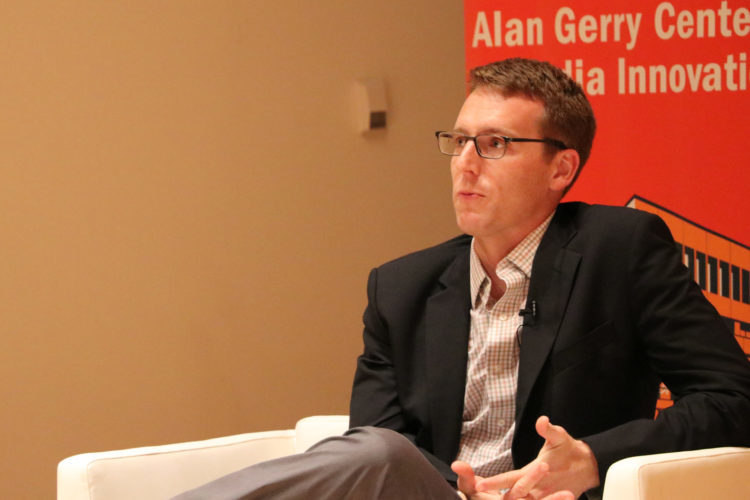The competition to prove — or disprove — claims that former President Donald Trump made about his wealth was fierce. Of special interest were Trump’s long-denied tax returns, something all modern presidents before him released.
In the midst of that flurry, David Fahrenthold of The Washington Post calmly turned story after story, biting off bit by bit of the truth of the Trump financial empire. His efforts scored early in the administration; Fahrenthold won the 2017 Pulitzer Prize in national reporting for a collection of pieces that disrobed Trump’s claims about his charitable giving. During that same year, he famously broke the story about the “Access Hollywood” tapes, which recorded Trump’s lewd brags about women.
Related Reading
Fahrenthold’s groundbreaking work continued throughout and beyond Trump’s time in office, creating a model for transparent reporting. Those methods were shared again at the recent Power of Narrative conference, hosted by Boston University, in a keynote: “What to do when nobody’s talking: Lessons covering secretive organizations, learned over five years writing about President Trump’s business.”
Fahrenthold joined the Post in 2000, covering beats that ranged from the Capitol police to Congress to the environment. He’s also an on-air contributor to NBC News and MSNBC.
In his virtual conference keynote, he spoke about how he uses data and social media to enhance his reporting. Ultimately, Fahrenthold came away with three lessons for any reporter looking to build stories about powerful figures who prefer to spin their own narratives.
Lesson No. 1: Get in the habit of making lists
If you do this type of reporting, you have to make long lists of names, including anybody who might have even the tiniest bit of information about the subject you’re probing. Fahrenthold’s reporting on Trump’s finances started with gathering names of anyone who had any connection with the Trump organization. He created spreadsheets with those names and then reached out by email to thousands of people.
“The conversion rate was pretty low,” he said. “We started to get some replies. Those people, their information, as small as it was, every bit of it was stuff that you couldn’t get any other way. They had something that was unique, that was unusual, that hadn’t been revealed before.”
Lesson No. 2: When information comes in, catalog it immediately
Information from FOIA requests and sources will come in when you least expect it. You may not need that information for the story you’re working on at the moment. But you need to take to catalog the information as soon as you receive it.
“It’s sort of building in this sea of lies and misinformation, building little islands of fact, one rock at a time,” he said. “It gets above the waterline. Once it's built, it stays built. If I don't catalog that information, put the context into it right away, I lose it. It goes back in the ocean.”
Lesson No. 3: Be aggressive in your reporting, but humble in your conclusions
This type of reporting means you will never know the complete story. As an aggressive reporter, you are constantly getting snapshots, little pieces of information that give you glimpses of what is happening, but never the full picture. Fahrenthold said it’s important to never fill in blind spots with assumptions.
“Tell your readers what you know and what you don't know,” he said, “so you avoid misleading them or steering them in a direction based on nothing.”
You can watch a recording of Fahrenthold's keynote session here:
***
Matt Tullis is director of Digital Journalism and an assistant professor of English at Fairfield University. He produces and hosts Gangrey: The Podcast.



